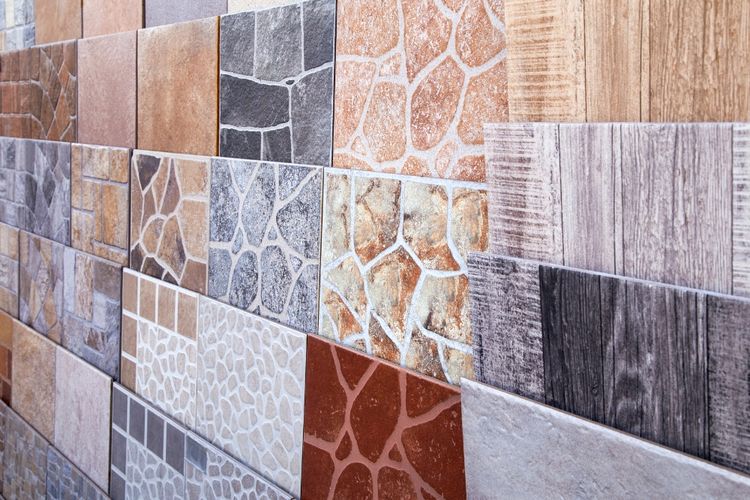The Enchantment of Handcrafted Moroccan Tiles in Modern Homes
From vibrant courtyards to serene bathrooms, the allure of handcrafted Moroccan tiles is captivating homeowners worldwide. These intricate, colorful pieces of art are not just flooring or wall coverings; they're storytellers, weaving tales of ancient craftsmanship into contemporary spaces. As we explore the resurgence of these timeless treasures, we'll discover how they're transforming ordinary rooms into extraordinary havens of beauty and cultural richness.

A Glimpse into the Rich History of Moroccan Tiles
The story of Moroccan tiles is as colorful as the tiles themselves. Originating in the 8th century, these intricate designs were born from a fusion of Berber and Arabic influences. Initially used to adorn mosques and palaces, they soon became a staple in Moroccan architecture. The craft was passed down through generations, with artisans dedicating their lives to perfecting the art of tile-making.
Each tile is a testament to patience and skill. Craftsmen hand-cut clay, shape it into tiles, and painstakingly paint intricate designs using natural pigments. The firing process, often done in traditional wood-fired kilns, brings these vibrant colors to life. This labor-intensive process results in tiles that are not just decorative elements but pieces of living history.
The Renaissance of Moroccan Tiles in Contemporary Design
In recent years, there’s been a remarkable resurgence of interest in Moroccan tiles. Interior designers and homeowners alike are drawn to their unique ability to infuse spaces with character and warmth. This revival isn’t about recreating traditional Moroccan interiors; it’s about integrating these timeless elements into modern design schemes.
The appeal lies in their versatility. From bold, colorful patterns that make a statement to subtle, monochromatic designs that add texture without overwhelming a space, Moroccan tiles offer something for every taste. They’re being used in unexpected ways – as kitchen backsplashes, shower walls, and even as art pieces in their own right.
Incorporating Moroccan Tiles: From Subtle Accents to Bold Statements
One of the most exciting aspects of the Moroccan tile trend is its adaptability. For those who prefer a more subtle approach, using tiles in small doses can have a big impact. A tiled entryway or a feature wall in a bathroom can add a touch of exotic charm without overwhelming the space.
For the bold at heart, Moroccan tiles offer endless possibilities. Imagine a kitchen where the entire floor is a sea of intricate patterns, or a living room where a tiled fireplace surround becomes the focal point. These tiles have the power to transform a room from ordinary to extraordinary with their rich colors and mesmerizing patterns.
The Craftsmanship Behind the Beauty
What sets Moroccan tiles apart is the level of craftsmanship involved in their creation. In an age of mass production, these handmade tiles stand out as works of art. Each tile is unique, with slight variations that speak to its handcrafted nature. This imperfection is part of their charm, adding character and depth to any space they adorn.
The process of creating these tiles hasn’t changed much over the centuries. Artisans still use traditional techniques, often working in small workshops where the craft has been passed down through generations. This connection to heritage and tradition is part of what makes Moroccan tiles so special in today’s fast-paced world.
Sustainability and Timeless Appeal
In an era where sustainability is increasingly important, Moroccan tiles offer an eco-friendly option for home decor. Made from natural materials and designed to last for generations, these tiles are a sustainable choice for conscious consumers. Unlike mass-produced alternatives, Moroccan tiles age gracefully, developing a patina that only adds to their charm over time.
Moreover, their timeless appeal means they’re unlikely to go out of style. While other design trends come and go, the beauty of Moroccan tiles remains constant. This longevity makes them not just a design choice, but an investment in the aesthetics and value of a home.
Blending Tradition with Modern Aesthetics
One of the most exciting aspects of the Moroccan tile revival is seeing how designers are blending these traditional elements with modern aesthetics. It’s not uncommon to see Moroccan tiles paired with sleek, contemporary furniture or used in minimalist spaces to add a pop of color and pattern.
This juxtaposition of old and new creates spaces that are both visually interesting and deeply personal. It’s a way of honoring the past while embracing the present, resulting in interiors that feel both timeless and of-the-moment.
The Future of Moroccan Tiles in Home Design
As we look to the future, it’s clear that Moroccan tiles will continue to play a significant role in interior design. Their ability to add depth, character, and a sense of history to a space is unmatched. We’re likely to see even more innovative uses of these tiles, as designers and homeowners push the boundaries of traditional design.
From tech-integrated smart homes adorned with centuries-old tile patterns to sustainable, eco-friendly spaces that showcase the natural beauty of handcrafted tiles, the possibilities are endless. The enduring appeal of Moroccan tiles lies in their ability to evolve while staying true to their roots, making them a timeless choice for any home.




